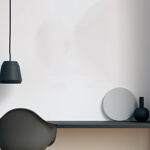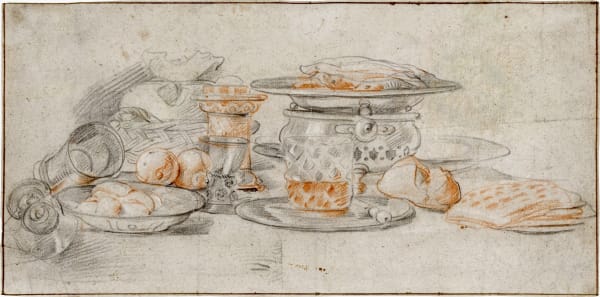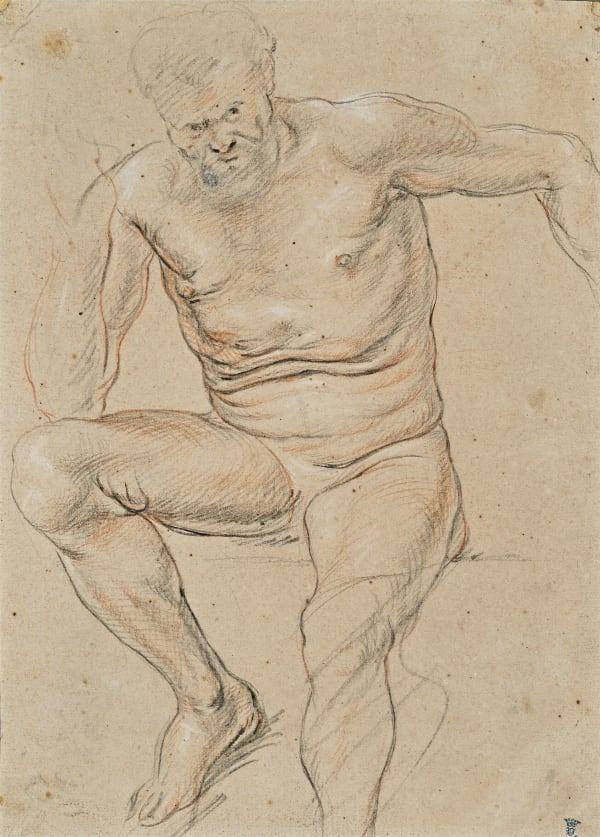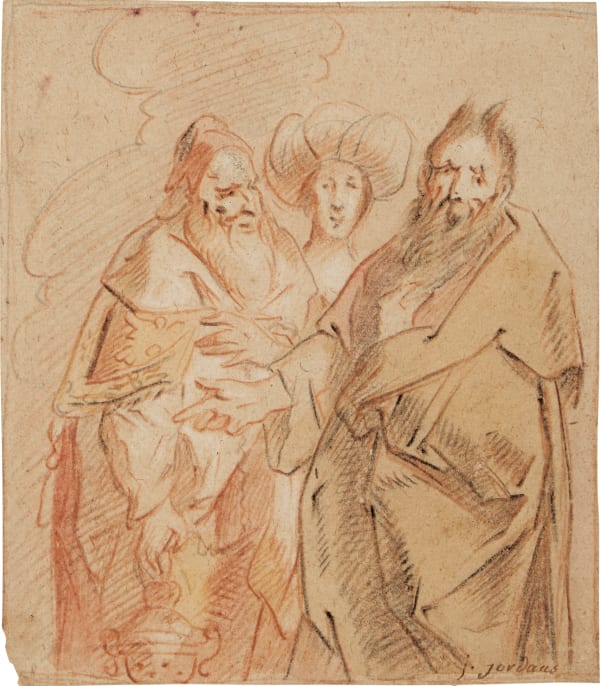Jacob Jordaens (Antwerp 1593 - 1678)
Four hundred years old yet strikingly modern at the same time, the gaze of the elderly man is directed straight at the viewer. The old fool is depicted in merciless detail. Although small in scale, the impact of this drawing can be felt from across the room.
Jacob (or Jacques) Jordaens was born in Antwerp in 1593. Little is known about his early life. At age fourteen he became an apprentice of Adam van Noort, who had also taught painters like Sebastiaen Vrancx and Peter Paul Rubens. He stayed with van Noort for eight years and joined the Guild of St Luke as a "waterpainter" in 1615. The following year he married van Noort's daughter Anna Catharina. The couple had three children, one of whom, Jacob II, went on to become a painter himself.
Jordaens' clientele consisted mostly of well-to-do burghers and clergymen, although after the death of Rubens and van Dyck he was given several courtly commissions too, including a set of eight paintings for Charles I of England and a series of commissions for Christina of Sweden. He also producted numerous designs for tapestries. Apart from a few trips up in the Northern Netherlands, Jordaens lived in worked in Antwerp his whole life. He became a wealthy man and was a prolific artist, remaining productive until the end of his life. Between 1621 and 1667 the records lists fifteen official pupils, but the actual number of students and assistants that passed through his studio must have been much higher, especially given his big output of often large-scale works.
Stylistically, Jordaens was enormously influenced by Rubens, especially in his early work, although the influence of Italian painters such as Veronese and Barocci - who he studied through prints and copies, having never been to Italy - can also readily be felt, for instance in his use of vibrant colours. Until about 1618 his work clearly shows a mannerist touch. Caravaggism certainly also left its mark on his artistic development, as did the work by his contemporary Abraham Janssens. Gradually, Jordaens developed a style that was more his own, fusing the monumental figures of Rubens and Janssens with the brilliant colours of the Italians, combined with a sense of realism. Later on, his figures became somewhat more crudely painted, his compositions marked by a folksy exuberance and a more restriced, darker colour palette. From the 1650's onwards, the quality of his work deteriorates visibly; his later work often shows crowded compositions - albeit with less monumental figures - and at times an almost monochrome use of colour, often restricting himself to thinly applied blue-grey or earth tones.
Jordaens was a somewhat gifted portrait painter, who also produced religious, mythological and history paintings as well as illustrations of Flemish proverbs. He is especially famous for the latter, following in the footsteps of Pieter Bruegel the Elder's genre tradition, honestly depicting Flemish life with authenticity and showing common people in the act of celebratory expressions of life. These humourous, albeit sometimes also somewhat coarse pictures, are among his best known work. Jordaens also etched a number of plates and was a prolific draughtsman, producing many excellent drawings either as preparatory sketches or as work of art in their own right.
The present drawing of three studies of the head of a man in a jester's hood was drawn after a live model by Jordaens and should be dated to the early 1640's. The figure appears on many paintings from this period by the artist, such as the various versions of the "Bean King" in the Royal Museum of Fine Arts of Brussels (Inv. 3545), the Louvre (Inv. 1406) and the Gemäldegalerie in Kassel (Inv. GK 108). Jordaens' "Suzanna and the Elders" (Statens Museum vor Kunst, Copenhagen, inv. KMSSp. 235) as well as his "Banquet of Cleopatra" (Hermitage, St. Petersburg, inv. 8536) show variants of this figure, a prototype which Jordaens seemed to revisit frequently.
Furthermore, the head lower right is very comparable to a modello currently in the Royal Museum of Fine Arts of Antwerp (Inv. 843), which was presumably also created ca. 1640 as a preparatory sketch for yet another version of the "Bean King". Roger D'Hulst, author of the catalogue raisonné of Jordaens drawings, mentions another drawing with a similar figure, kept at Mount Holyoke College, Massachussetts (D'Hulst, 1974, cat. A164), which could be a self-portrait of the artist. He mentions a further similar drawing in an addendum to his catalogue, published in 1990 („Jordaens Drawings. Supplement II“, in: Master Drawings 28, 1990, S. 153-154, Fig. 17). Finally, a comparable drawing, both in subject matter and in execution, was recently offered at Robert Simon Fine Art (RSFA, "New, Old & Unexpected I", New York, 2020, cat. p. 24-25).
The present sheet can thus be linked to many of Jordaens compositions from the 1640's, serving as some kind of prototype which the artist altered in function of the painting he was creating.
Provenance
Austrian private collection.
Literature
We are grateful to Dr. Hans Vlieghe for confirming the attribution to Jacob Jordaens. We are grateful to Dr. Jeremy Wood for his assistance in cataloguing this drawing and for confirming the attribution to Jacob Jordaens.
- X
- Tumblr





